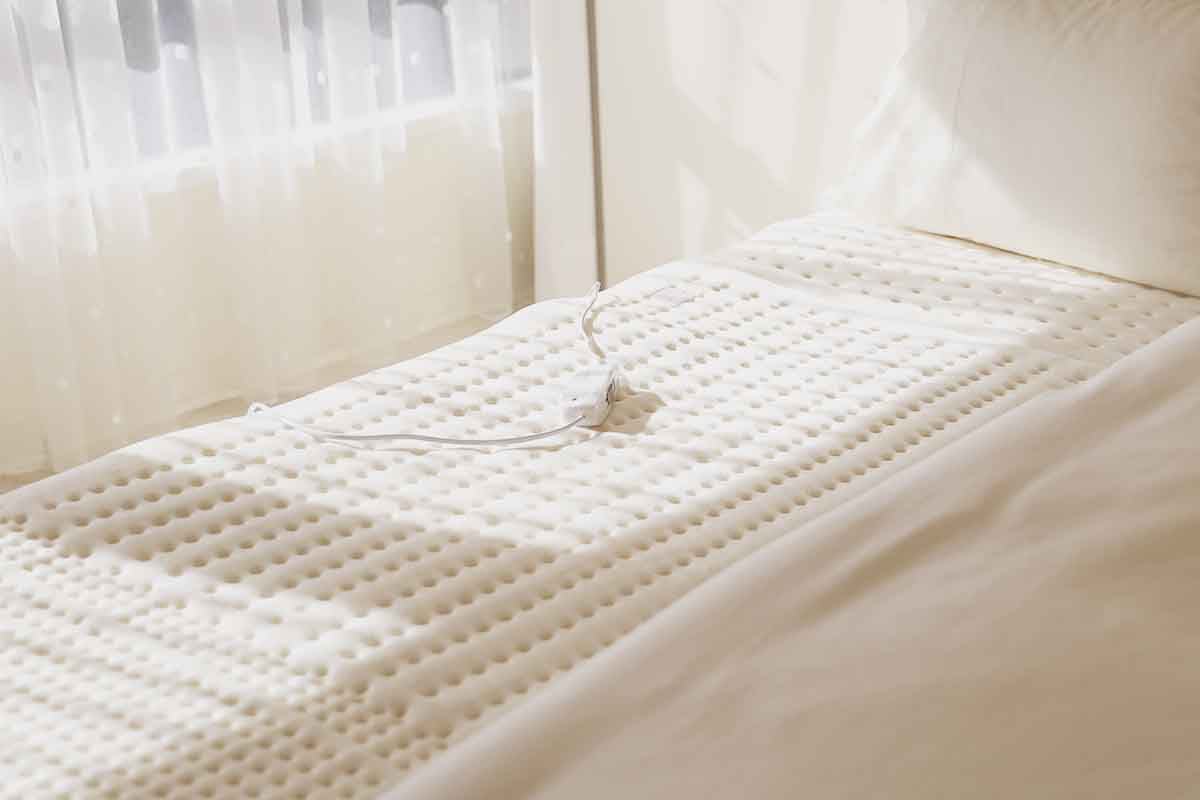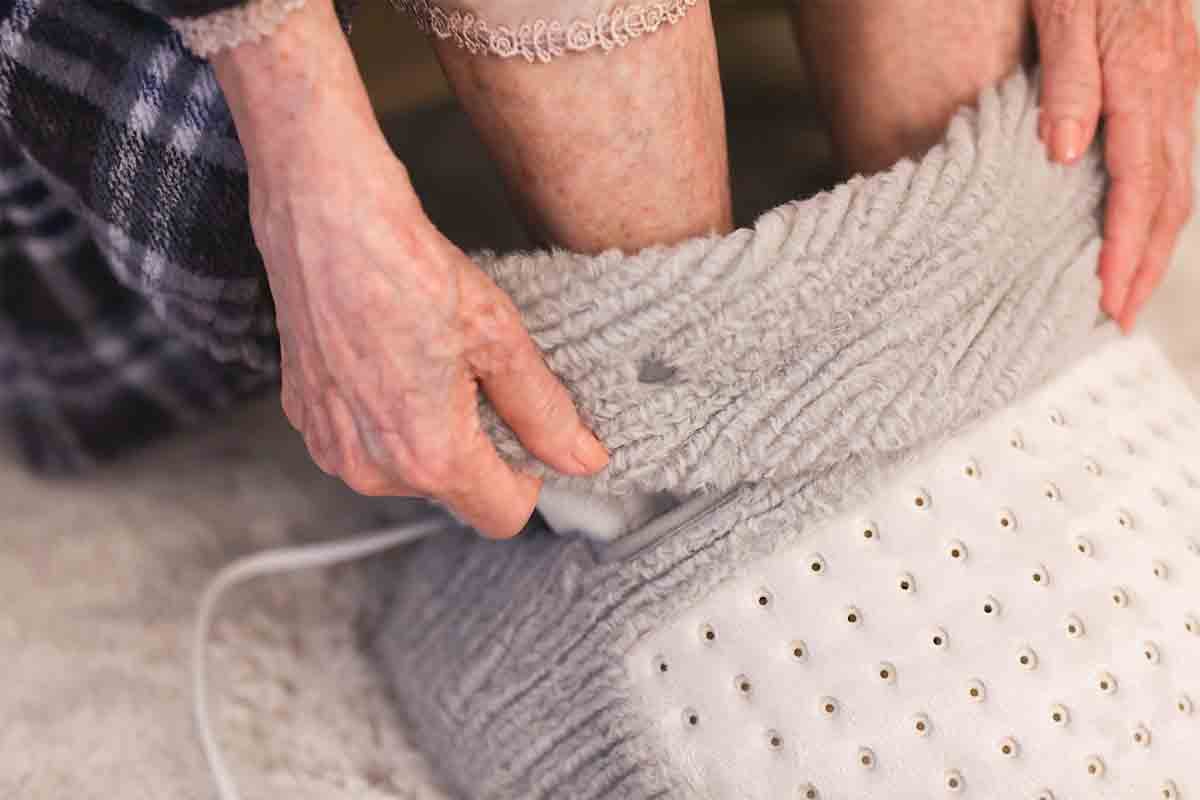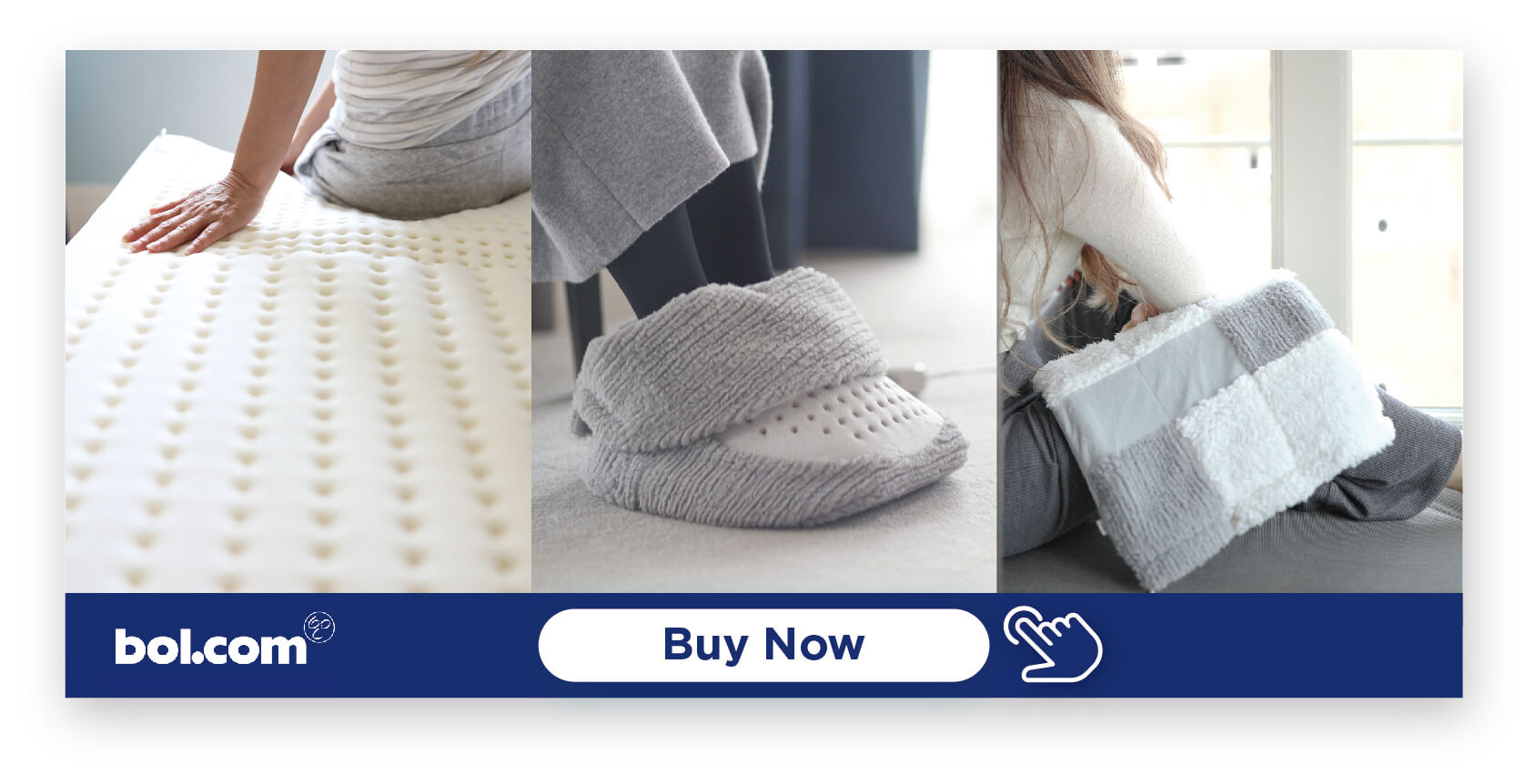2022%20Pillar%20Page_Body%20Ache/a-cold-feet-in-bed.jpg?width=1200&height=800&name=a-cold-feet-in-bed.jpg)
When someone says he/she has cold feet, that doesn't always mean getting nervous for an event. Some people might literally have cold feet: Feet that feel cold to them, cold to the touch, or both. Having cold feet may sometimes be temporary and harmless. It could even happen after a long and tiring day at work or school. But when you experience it every day, it could indicate a more serious health problem.
Why Your Feet Are Cold: Symptoms and Causes
Normally, getting cold feet is a normal response to colder temperatures. Research shows that our extremities (i.e. our hands and feet) tend to feel cold more than the rest of our body. Because they are body parts that are farthest from the heart, cold feet show that your body is trying to retain the heat around your vital organs.
Over time, the continued reduced blood flow will decrease the oxygen in those tissues. This will cause your feet to take on a bluish color. Your feet may appear blue or purple when you’re in a sitting position, and a pale or white color when you’re lying down. Normally, this symptom is not serious, as your feet will return to normal when the temperature warms up again.
However, when this symptom is combined with pain in calves while walking or soreness on your toes, numbness, and pins and needles (that tingling sensation you feel in your feet or legs), you need to get yourself checked.
Aside from really cold temperatures, your cold feet may be a response towards high stress or anxiety. When you are experiencing a hectic day at work, home or school, your body starts to pump adrenaline into the bloodstream. Because this decreases the blood flow to your extremities, your hands and feet can get cold.
Aside from this, cold feet may be accompanied by other symptoms, like fatigue, fever, weight changes, and joint pains.
Some of the most common causes of having cold feet could be a lack of warmth in the body, a decreased circulation in the extremities, and nerve issues or damage. Other diseases that can cause cold feet symptoms include diabetes, arteriosclerosis, peripheral vascular disease, and neuropathy of any cause.
Your body needs the right amount of blood to keep your heart pumping, legs moving, and brain functioning. Long periods of sitting in a cramped and immobile position can increase your chances of having circulation problems. Poor circulation could mean that the heart struggles to pump blood through the body at a quick enough pace, making it difficult to get to the feet regularly.
Poor circulation is often a sign of other health issues, such as obesity, high blood pressure or cholesterol, diabetes, and hyperthyroidism. Peripheral Vascular Disease (PVD), a common cause of poor circulation, is a condition that restricts normal blood flow to and from the heart. A related condition, venous insufficiency, occurs when your veins are unable to effectively send blood from your legs back to your heart. This condition may result in severe leg swelling, varicose veins, and skin discoloration.
If you are also prone to anemia, wherein your body has a low count of red blood cells, your feet may also be cold. People with high blood sugar levels can also lead your arteries to narrow down. Inadvertently, your body will receive less blood supply, leading to colder feet.
If you leave your feet out in sub-zero temperatures longer than you are used to, you are also likely to suffer from frostbite and an eventual nerve disorder. In some cases, your cold feet can be a symptom of an underactive thyroid gland and slow metabolism.
How To Keep Your Feet Warm During Bedtime
If you notice that all these signs and symptoms occur, it can only mean that your cold feet need to be treated immediately. It's best to consult your doctor right away and follow some of the effective ways below to warm up your feet.
1. Wash Your Feet With Warm Water
Water conducts heat 25 times faster than air. Before going to bed, place your feet in warm water between 38 and 46 degrees Celsius. Once your feet feel comfortably warm, dry them with a soft towel and immediately wear bed socks.
2. Massage Your Feet
Let a pal with warm hands rub your feet to stimulate sluggish circulation. You may ask him/her to push their fingertips and thumbs in circular movements to massage each foot in turn, beginning with the toes and working toward the heel. Apply a foot balm that contains ginger or eucalyptus oil for further warming effects.
3. Stay Hydrated
Drinking lots of water can be the easiest way to improve blood circulation in your body, thus preventing you from having cold feet. This helps increase the volume of blood flowing to your digits. Although it is advised to drink around 2 liters of water everyday, it is best to drink more, depending on how much water your body needs. Being hydrated ensures that your body can stay healthy, heal well, and function properly during daily activities.
4. Don't Smoke
Smoking can contribute to having cold feet and poor blood circulation in the body. Quitting tobacco smoking can help keep your blood pressure under control and your cholesterol levels in the healthy range.
5. Exercise Regularly
When you're at work, try to avoid long periods of immobility by doing a few simple stretching exercises at your desk. Try to stand up and walk for a short break. Sitting in a recliner with your legs up can also be a simple yet effective remedy for poor circulation.
During nighttime, if your feet become uncomfortably cold, you may wake up and then have difficulty getting back to sleep. Effective warm-up exercises that require minimal preparation will help you quickly drift back to sleep. Elevate your legs by placing them on some pillows in a comfortable formation, at about 15 to 30 centimetres above your heart.
6. Wear Socks
Choose bed socks that are made of natural fibers, such as wool and cotton, as they contain air pockets that trap warm air. Be sure to also select electric underblankets that have separate heat temperature for your body and feet. Lastly, go with blankets that are made of fleece, and look for one that has an additional foot warmer so that your feet can stay warm throughout the night.
You may also choose to make rice socks with three simple materials: sturdy socks, rice and rubber bands. If you have a large sock, fill it up with three cups of rice, tie it with a rubber band and place it in the microwave for a few minutes. Once done, you can place these heated bags under your blanket next to your feet.
Alternatively, a better way is to use Wellcare’s unique 4D DWF electric underblanket with a foot zone that provides comfortable temperature for your feet.
7. Use Electric Underblankets
There are some special equipment that can help improve blood circulation in your body and to keep your feet warm at night such as bed socks, leg massagers, exercisers, electric underblankets and electric foot warmer.

4D DWF allow cold and warm air and body moisture to interact bi-directionally to provide the most excellent breathability, keeping your bed climate at the best temperature and humidity for sleep. You won't be in a state of half awake and half asleep because it's too hot or too cold. BBC Design allows everyone to get a good night’s rest every single night.

Keep your body warm enough before going to sleep. When heat dissipates from the skin, your core body temperature lowers, reducing the difference between the core body and distal skin temperatures to induce drowsiness. Wellcare BBC (Best Bed Climate) Design products help you fall asleep easier.
Leg massagers are a great way to relieve muscle pain, not only in your foot but also your calves. Especially when it’s badly needed, massages can stimulate both blood circulation and endorphins. Instead of massaging your own feet or asking a loved one to do it for you, a massager can lessen your stress. When used regularly, it can also improve your foot flexibility. Pairing this with some exercises, you can help your body stay in top shape.
The same goes for an electric underblanket. When using one, you can place it on top of your bedding or you can place it between the sheets and covers. Some people may find using the blanket on its own, so you can adjust the temperature according to your liking or using the layering technique.
If you are looking for the perfect electric blanket, Wellcare’s unique BBC designs electric blankets may just be the right solution for you. BBC, also known as Best Bed Climate designs, is a technology that changes the electric blanket temperature moderately before and after you fall asleep. This special technology can provide a better sleeping temperature and help you sleep a lot better!
Keep it Warm with WellCare
From heating pads to electric underblankets, Wellcare has a wide range of solutions to help you sleep better and keep your feet warm at all times. For your complete warmth, comfort, and safety, these are made using only the finest available materials.
Our products are also equipped with the 4D Dynamic Warmth Flow system (4D DWF). An innovation in electric heating technology, the 4D DWF mimics the human body’s breathing to ensure even heat distribution throughout the surface of the product.
Are you looking for a better night of sleep? We've create a Ebook for you on "How to create the perfect sleeping Environment?"
Click on the link below to download now!


.png?width=512&name=united-kingdom%20(1).png)


